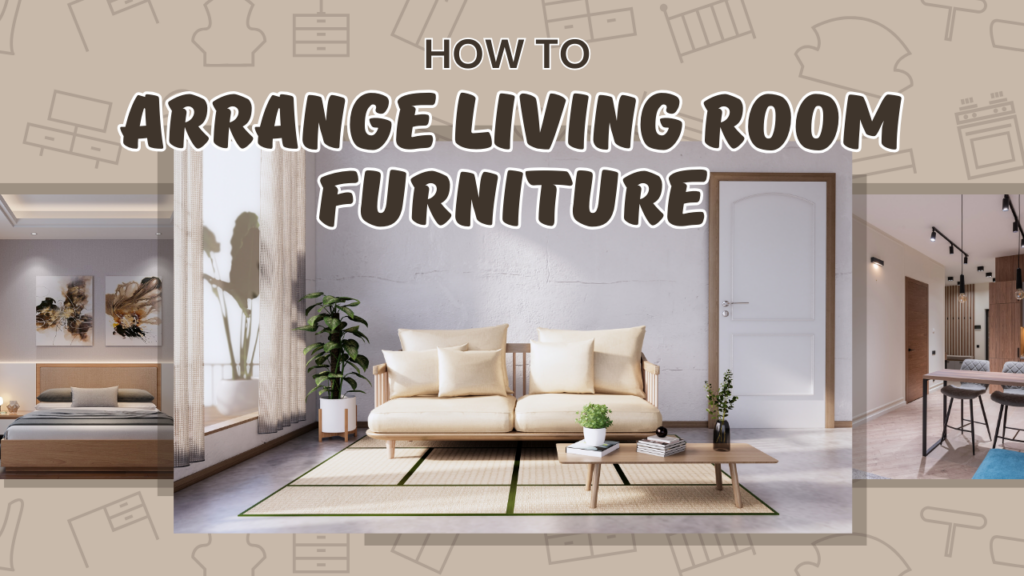Arranging your living room furniture can make a huge difference in how your space looks and feels. Whether you have a large or small living room, the right layout can create a cozy, functional, and stylish space for you and your guests. If you’ve ever struggled with finding the perfect furniture placement, don’t worry! This guide will help you arrange your living room like a pro.
1. Understand Your Space
Before moving any furniture, take a moment to analyze your living room:
- Measure the dimensions of your room.
- Note the location of windows, doors, and electrical outlets.
- Identify the focal point of the room (TV, fireplace, or a large window).
Having these details in mind will help you make the most of your space.
2. Choose a Focal Point for Your Living Room Furniture
A focal point is the main feature that draws attention in your living room. Common focal points include:
- A fireplace
- A large TV or entertainment center
- A statement wall or window with a beautiful view
Arrange your furniture around this focal point to create a balanced and inviting setup.
READ MORE: How to Clean Wood Furniture
3. Start with the Largest Piece
The biggest piece of furniture, usually a sofa, should be placed first. Position it in a way that complements your focal point. Common sofa placements include:
- Facing the TV or fireplace
- Centered under a window
- Creating a division in an open floor plan
Once your sofa is in place, you can arrange the smaller pieces around it.
4. Create Conversation Areas
A living room should encourage conversation and interaction. Arrange your Living Room Furniture like chairs, loveseats, or additional seating so that people can easily talk without raising their voices. Some great layouts include:
- A U-shaped arrangement with a sofa and two chairs facing each other
- An L-shaped layout using a sectional sofa
- A circular setup for a cozy and intimate feel
5. Keep Walkways Clear
Make sure there’s enough space for people to move around comfortably. A good rule of thumb is to leave at least 2 to 3 feet of space for walkways between furniture pieces. This helps avoid a cramped and cluttered look.
6. Balance the Room
Balance is key to making your living room feel visually appealing. Follow these tips:
- Distribute furniture evenly so one side of the room isn’t heavier than the other.
- Mix different furniture heights to add dimension.
- Use rugs, curtains, and wall art to bring the design together.
7. Consider Functionality
Think about how you use your living room and arrange your Living Room Furniture accordingly:
- If you love watching TV, make sure the seating is positioned for a good view.
- If you entertain guests often, ensure there’s plenty of comfortable seating.
- If you need extra storage, opt for coffee tables or ottomans with hidden compartments.
8. Use Rugs to Define Spaces
An area rug can help anchor your furniture and define the seating area. Keep these tips in mind:
- The rug should be large enough for at least the front legs of all furniture to rest on it.
- Choose a rug that complements your furniture and wall colors.
- Position the rug in the center of the seating arrangement.
9. Add Lighting for Ambiance
Lighting plays a big role in setting the mood of a living room. When arranging your Living Room Furniture, layer different light sources to create warmth and depth:
- Overhead lights for general illumination
- Table lamps for a cozy feel
- Floor lamps for added style and brightness
10. Personalize Your Space
Your living room should reflect your personality. Add decorative elements like:
- Throw pillows and blankets for comfort
- Wall art, mirrors, or framed photos
- Indoor plants to bring life to the space
- Bookshelves with your favorite books and decor
Final Thoughts
Arranging living room furniture is all about creating a comfortable and welcoming space. By understanding your space, focusing on a good layout, and adding personal touches, you can transform your living room into a stylish and functional area for relaxation and entertainment. Experiment with different arrangements until you find the one that feels just right!



